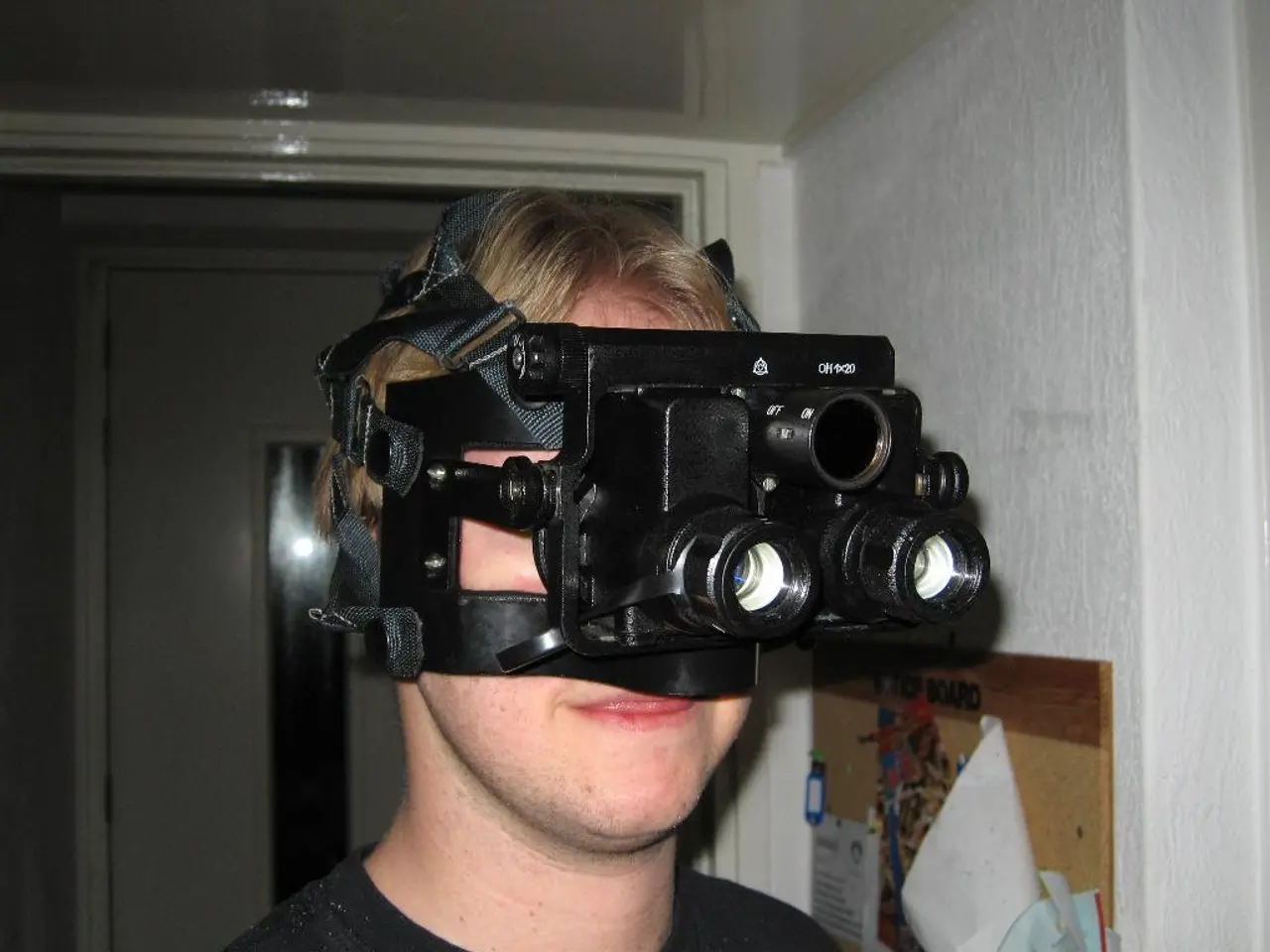Information on Selecting a Virtual Reality Headset
In the ever-evolving world of technology, virtual reality (VR) and augmented reality (AR) headsets are making their way into classrooms, revolutionizing education. Here's a guide to help schools choose the best VR and AR headsets for their unique needs.
Balancing Cost, Connectivity, and Suitability for Group Use
The ideal AR and VR headsets for schools in 2025 strike a balance between cost, connectivity, brand compatibility, and suitability for group use. Among the standout options:
Meta Quest 3
Priced at around $499 for the 128GB model, the Meta Quest 3 is a highly recommended VR headset. It operates standalone, requiring no PC, and boasts a large content library suitable for educational software. With good performance comparable to more expensive models but at half the price of flagship devices, the Meta Quest 3 is a cost-effective choice for schools on a budget. It supports broad wireless connectivity and is compatible with many educational VR applications.
Merge Cube
While full AR headsets are less emphasized, the Merge Cube is a notable tool for affordable AR experiences tailored for education, particularly STEM subjects. It works with mobile devices, meaning schools don’t need to invest in expensive dedicated headsets. The hardware is low-cost (~$20), making it very accessible for group and classroom use, though it is more limited than full VR headsets.
Meta Quest Pro
On the higher end, the Meta Quest Pro offers advanced mixed reality features that could benefit schools with larger budgets needing higher fidelity VR/AR and professional-grade hardware. However, its cost and complexity may limit widespread adoption in typical K-12 or even many college settings.
Ray-Ban Meta Smart Glasses 2 and Oakley Meta Smart Glasses
These smart glasses offer AR functionality, good Bluetooth and Wi-Fi connectivity, and compatibility with both iOS and Android phones. They are better suited for discreet AR overlays and quick fact checking, which might be useful for higher education and college students rather than full immersive classroom experiences.
Key Considerations for Schools
| Factor | Meta Quest 3 | Meta Quest Pro | Merge Cube | Ray-Ban Meta / Oakley Meta | |--------|--------------|----------------|------------|---------------------------| | Approx. Cost | $499 | $900-$1000 | ~$20 | Varies, higher than Merge Cube | | Connectivity | Standalone Wi-Fi, Bluetooth | Standalone Wi-Fi, Bluetooth | Mobile via Bluetooth/Wi-Fi | Bluetooth 5.2/5.3, Wi-Fi | | Brand Compatibility | Broad app ecosystem, Android/iOS apps available | Similar, more pro-oriented apps | Works with smartphones/tablets | Pairs with smartphones iOS/Android | | Group Usage | Good for individual + group VR activities, multi-user sessions possible with network | Better visual fidelity for advanced demos, fewer units per budget | Excellent for large groups, low cost | Mainly personal use, less for group immersive learning | | Educational Use | Immersive VR experiences, STEM, simulations | High end VR/MR, professional use cases | Affordable AR for STEM, hands-on interaction | Augmented reality for hands-free info and media |
Summary
The Meta Quest 3 stands out as the best VR headset for schools due to its balance of cost, standalone functionality, and app ecosystem suitable for an educational environment. For affordable AR in classrooms emphasizing group interaction, the Merge Cube is ideal. Smart glasses like the Ray-Ban Meta offer additional AR convenience but are less suited for immersive group learning.
Schools should factor in their budget, existing device ecosystems, and intended use cases (immersive VR vs. AR overlays vs. simple interactive tools) when selecting between these options.
Additional Considerations
- Rental options for VR headsets are available.
- The cost of VR and AR headsets has become more accessible with a range of price points, from basic Google Cardboard to complex multirig setups like ClassVR and Apple Vision Pro.
- Central control of headsets for simultaneous images and locked controls can be more expensive.
- When choosing a VR headset for schools, it's recommended to consider the software needed for effective teaching first, then work backwards to the hardware that suits the software requirements and budget.
This guide aims to help in choosing VR or AR headsets for schools, taking into account various factors such as cost, connectivity, brand compatibility, group usage, and educational use.
- In the future classrooms of 2025, schools should consider the Meta Quest 3 as it offers a balanced cost, standalone functionality, and a suitable app ecosystem for educational software, making it the best VR headset for schools.
- For affordable AR experiences focused on group interaction, the Merge Cube is an ideal choice, particularly for STEM subjects, as it works with mobile devices and has a low cost.
- While the Meta Quest Pro offers advanced mixed reality features, its higher cost and complexity may limit its widespread adoption in typical K-12 or even many college settings.
- Smart glasses like the Ray-Ban Meta Smart Glasses 2 and Oakley Meta Smart Glasses provide AR functionality, good Bluetooth and Wi-Fi connectivity, and are better suited for discreet AR overlays and quick fact checking, making them more useful for higher education and college students rather than full immersive classroom experiences.




